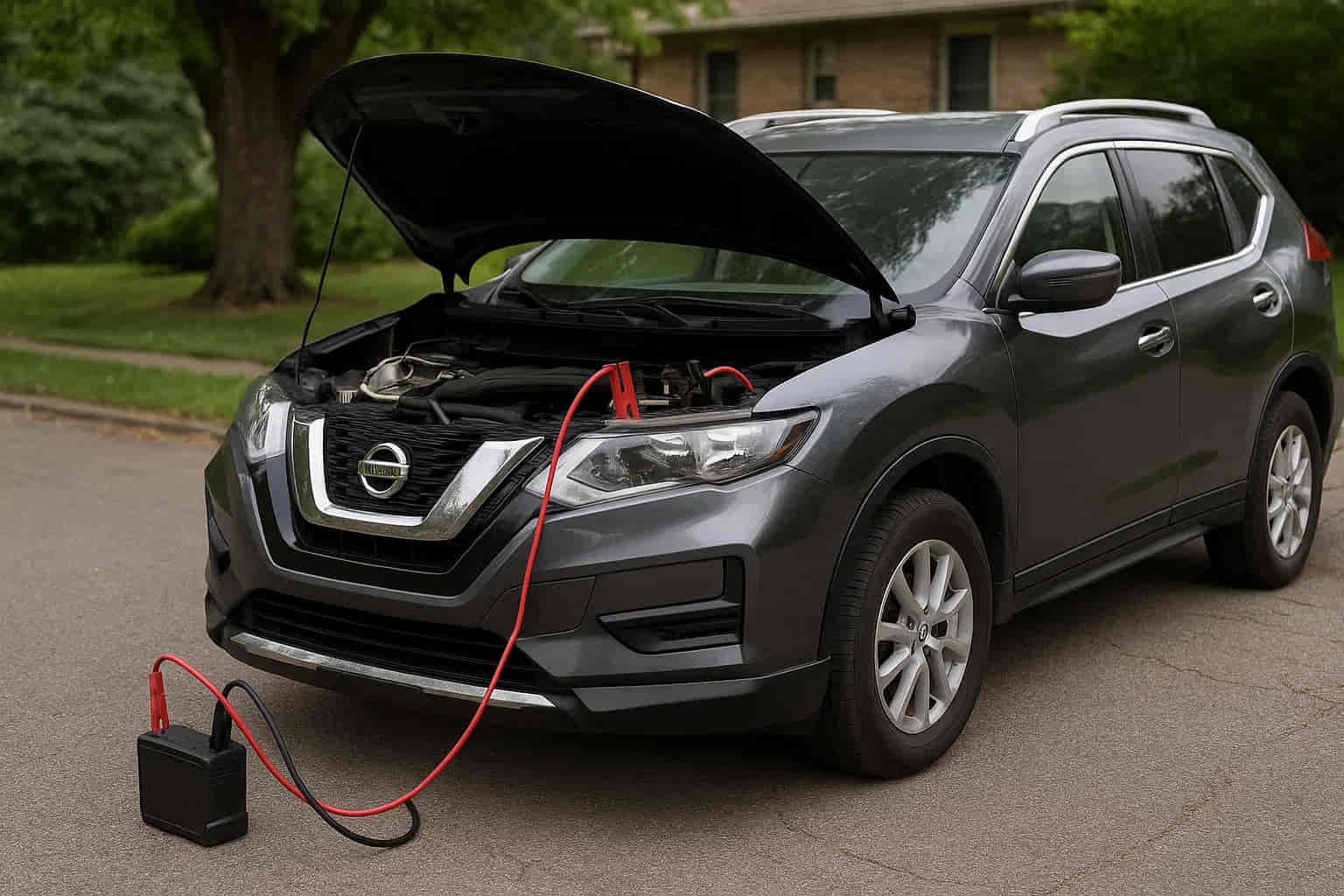When your Nissan Rogue refuses to start, frustration quickly replaces the convenience you expect from a reliable SUV. What makes this issue more complicated is that the reasons behind a no-start condition can vary depending on the model year. A Rogue from 2015 might struggle with worn-out sensors or battery failures, while newer versions between 2021 and 2023 could face complex electronic glitches that demand advanced diagnostics. Drivers often find themselves caught between do-it-yourself checks and costly trips to the mechanic, searching for clear answers.
Understanding Nissan Rogue is not starting problems by model year helps owners identify patterns, prevent common failures, and prepare for repair costs before they spiral out of control. Whether you own an older Rogue or recently purchased a newer model, knowing the weak points of each production year is essential for keeping your vehicle dependable. In the following breakdown, we will explore the most reported starting issues from 2015 to 2023, explain why they occur, and suggest practical solutions to get your Rogue back on the road with confidence.
Nissan Rogue 2015–2016: Early Signs of Starting Problems
Owners of the 2015 and 2016 Nissan Rogue often encounter the first wave of starting issues that come with aging vehicles. At this stage, the most frequent culprit is a weakened or completely dead battery. Many drivers report that their Rogue shows signs of life—dashboard lights flicker, or the radio powers on—but the engine refuses to crank. This usually points to insufficient current reaching the starter motor. Alongside battery wear, faulty crankshaft position sensors are a recurring headache. When this sensor fails, the engine control unit cannot properly detect the engine’s position, resulting in repeated cranking without ignition.
Another recurring issue in these model years lies in the ignition relay and starter solenoid. After years of heat cycles and vibrations, these electrical components may stick or fail altogether, leaving the driver stranded without warning. What makes the 2015–2016 Rogue particularly prone to such issues is the combination of aging electrical parts and a design that relies heavily on sensor accuracy. The repair costs for these problems range from a relatively affordable $150 battery replacement to upwards of $600 if a sensor or starter assembly needs replacement.
For many owners, the frustration is not just about the car failing to start, but the unpredictability of when it will happen. Some mornings the Rogue fires up normally, while the next day it sits silent in the driveway. Recognizing these early warning signs allows drivers to replace weak components before complete failure, saving time, money, and stress.
Nissan Rogue 2017–2018: Electronic Hiccups and Starting Failures
With the 2017 and 2018 Nissan Rogue, the “not starting” problem becomes less about worn-out batteries and more about electronic reliability. These model years introduced updates to the intelligent key system and electronic control modules, but those very advancements also created new weak points. Many drivers describe a scenario where the push-to-start button does nothing at all, even when the fob battery is fresh. In most cases, the issue stems from a faulty brake switch or a malfunctioning relay that prevents the system from recognizing the start command.
Another pain point is the electronic control unit itself. Software glitches and communication errors between sensors can trigger a no-start condition, often without illuminating the check engine light. This makes troubleshooting particularly frustrating, since the vehicle gives little feedback to the owner. Cold weather amplifies these issues, with some Rogues failing to recognize the smart key signal during freezing mornings.
Repair costs vary widely for these problems. A brake switch replacement may only set an owner back about $100, while ECU-related repairs or reprogramming can climb into the $800 range. The unpredictable nature of electronic failures makes these models challenging for do-it-yourself fixes. For many owners, the choice becomes either investing in diagnostic tools or relying on dealership service centers with specialized equipment.
Despite these headaches, the 2017–2018 Rogue remains a popular choice thanks to its comfort and efficiency. However, when the engine refuses to respond to a start attempt, owners quickly realize that modern electronics, while convenient, can sometimes turn a simple ignition into a complex repair journey.
Nissan Rogue 2019–2020: Battery Drain and Start/Stop System Issues
By the time the 2019 and 2020 Nissan Rogue rolled out, Nissan had equipped the SUV with newer features designed to improve fuel efficiency and driving comfort. One of the most notable additions was the automatic Start/Stop system, which shuts off the engine at stoplights and restarts it when the driver accelerates. While useful in theory, this feature introduced a new wave of starting complaints. Owners often report that the vehicle fails to restart smoothly, or in some cases, refuses to restart at all once the engine has shut down.
Battery drain is another major issue in these model years. Even relatively new Rogues have been known to suffer from parasitic power losses overnight, leaving the driver with a car that won’t crank in the morning. Unlike older models where the solution might simply be a new battery, here the problem often lies in a combination of battery design and electrical management modules. Replacing the battery can provide temporary relief, but without addressing the underlying cause, the no-start problem tends to return.
For many owners, this creates a painful contradiction: owning a newer SUV should mean fewer headaches, yet they find themselves stranded with an unresponsive push-to-start button. Repair costs for Start/Stop related problems typically fall between $400 and $900, especially if the system requires software updates or replacement components.
These challenges highlight how technology, while advancing convenience, can sometimes complicate the basics of reliability. Drivers who experience these issues often learn to disable the Start/Stop system when possible, prioritizing consistent starting performance over minor fuel savings.
Nissan Rogue 2021–2023: Rare but Costly Starting Issues
The latest generation of Nissan Rogue, covering the 2021 through 2023 model years, shows fewer starting problems compared to older versions. However, when issues do occur, they tend to be far more complex and expensive to resolve. Many drivers describe scenarios where the SUV remains completely silent despite having a healthy battery. In these cases, the culprit is often buried deep within advanced electronic modules such as the Body Control Module (BCM) or Engine Control Unit (ECU). Unlike older Rogues that might fail because of a worn sensor or dead relay, these newer models require precise diagnostics, specialized tools, and sometimes complete module replacements.
Another concern lies in software-driven components. Owners have reported occasional glitches in the push-to-start system, where the vehicle fails to recognize the brake pedal signal or the smart key despite both functioning properly. Such errors often disappear temporarily after restarting the system, only to return unpredictably. While rare, these inconsistencies highlight how sensitive modern vehicles have become to electronic communication.
Repair costs in this generation are significantly higher. A minor recalibration might cost a few hundred dollars, but a replacement ECU or BCM can exceed $1,200. For drivers, the frustration lies in the fact that their relatively new vehicle—often still under warranty—can experience downtime over issues that feel disproportionately complex.
Although the 2021–2023 Rogue remains more reliable overall, its starting problems reflect a shift in modern automotive design: fewer mechanical failures, but higher stakes when electronic systems misfire. Owners who face these issues often rely heavily on dealership expertise, since DIY fixes are nearly impossible without factory-level diagnostic equipment.
Quick Reference Table: Nissan Rogue Is Not Starting Problems (2015–2023)
| Model Year | Common Starting Issues | Typical Fix | Average Cost |
|---|---|---|---|
| 2015–2016 | Weak battery, crankshaft sensor failure, worn starter relay | Battery or sensor replacement | $150–$600 |
| 2017–2018 | Smart key recognition errors, faulty brake switch, ECU glitches | Switch replacement or ECU reprogramming | $100–$800 |
| 2019–2020 | Battery drain, Start/Stop system failure, electrical module issues | Battery replacement, software updates | $400–$900 |
| 2021–2023 | BCM/ECU faults, push-to-start glitches, electronic miscommunication | Module replacement or recalibration | $500–$1,200+ |
This comparison highlights how each generation of the Nissan Rogue presents different challenges. Older models lean toward mechanical wear, while newer ones shift the burden to electronics and software.
Conclusion
No matter the model year, when a Nissan Rogue is not starting, it disrupts both daily routines and driver confidence. What becomes clear from examining the 2015 through 2023 models is that each generation carries its own weak points. Older Rogues tend to suffer from worn-out batteries, aging sensors, and starter relays, while newer versions shift the problem toward electronic modules and software-driven systems. The frustration for owners lies not only in the inconvenience but also in the uncertainty—never knowing if the next key turn or push-to-start attempt will leave the SUV silent.
The good news is that recognizing these patterns helps drivers prepare. A 2015 Rogue owner can plan for a sensor replacement, while someone with a 2020 model may focus on managing battery health and Start/Stop performance. For those with the latest generation, staying informed about software updates and maintaining warranty coverage becomes essential.
Ultimately, prevention remains the best solution. Regular maintenance, early diagnosis of warning signs, and prompt repairs reduce the risk of being stranded. By understanding Nissan Rogue is not starting problems by model year, owners gain the knowledge to act before minor issues escalate, keeping their SUV reliable and ready for the road ahead.

